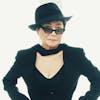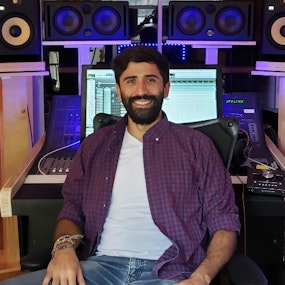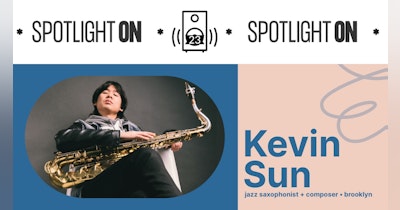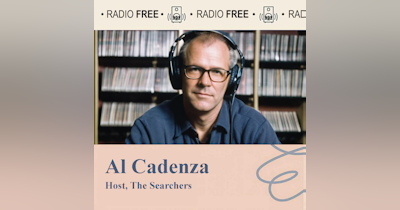Photo: Dave M. Benett/Getty Images
Admittedly very late to the game, my introduction to Death Cab for Cutie (DCFC) was their 2015 single “The Ghosts of Beverly Drive”. Its driving rhythm, and the breakdown about two-thirds of the way in, was what had me first coming back until I discovered the magic of bandleader Ben Gibbard's lyrics. When “Gold Rush”, the first single from their album Thank You For Today was released in 2018, I immediately paid heed.
Being the completist that I am, one day I searched out the credits for “Gold Rush” and was surprised to find another familiar name from my childhood memories. Strangely, at least to me at that point in time, Yoko Ono was credited as one of the three songwriters alongside Benjamin Gibbard, and Dave Depper. This crossroads between Death Cab for Cutie, an indie rock band, and the ever-so controversial, Yoko Ono, had me scratching my head. Until I decided to do my own research, all I could say about Ono is that she was the biggest reason for the Beatles disbanding. I grew up with a father that adored the Fab Four and their music, and it is because of him that I believed this. Aside from that, the only other reference material that I had come across in popular culture was a clip of her loudly ululating during a John Lennon / Chuck Berry performance. This clip has been used by many to make fun of and mock Yoko and her relationship with Lennon.
All these thoughts about Yoko, the Fab Four, and DCFC, as puzzling as they were, lay dormant for a few more years until the indie rockers hit us once again with what appeared to be another collaboration. “Waiting for the Sunrise” was released in early 2022, and this time the credits showed Yoko Ono as the sole composer, while also prominently featuring her face on the album cover art. This single release finally piqued my interest enough to really dig in and figure out what was going on.
It turns out “Waiting for the Sunrise” is a DCFC cover of a Yoko song originally released in 1973 on her Approximately Infinite Universe album. The 2022 version did not see the light of day on its own, it was part of a 14-song compilation titled Ocean Child: Songs of Yoko Ono. This project, helmed and compiled by Benjamin Gibbard, features covers of Ono songs by the likes of David Byrne, The Flaming Lips, Japanese Breakfast, Sudan Archives, and various others. You can also enjoy the Ocean Child podcast, which came out simultaneously and is interspersed with listening moments - spots where you can listen to the cover version and the original song, for reference.
So, why all of these intersections with Yoko Ono and her music? Gibbard states, "As an advocate, the tallest hurdle to clear has always been the public’s ignorance as to the breadth of Yoko’s work. She has consistently created melodies as memorable as those of best pop writers. As a lyricist, she has always written with poignance, sophistication, and deep introspection. It is my sincere hope that a new crop of Yoko Ono fans fall in love with her songwriting due in some small part to this album we have put together." There you have it, in a nutshell.
It seems the front man of DCFC has been a fan of Yoko's musical output for a couple of decades now, since stumbling across one of her albums at a record shop he was busy exploring. Instead of the caricature of a woman, clipped out of context, ululating wildly, that the great majority of us are familiar with, he found himself with beautiful, well-written songs, and deeply reflective lyrics oftentimes on subject matter way ahead of its time.
Fast forward to the production of “Gold Rush”, and what you hear is a sample from Ono's 1972 single “Mindtrain”, and it is the central piece around which the single was constructed. The demo was almost discarded, until Gibbard re-worked the lyrics using bits and pieces from other unused songs. What surfaced was a song describing the gentrification of his hometown, Seattle, and "the role that geography plays in our memory". So, rather than a collaboration in the traditional sense, Yoko Ono was included as a songwriter in the credits because of the sample that was utilized within the song.
The Ocean Child compilation was one more way for Gibbard to show his deep appreciation, and to give Ono her past due flowers for her musical contributions. In a sense, his interest in her music, and his desire to have her legacy rectified, is what brought me to the discovery of a woman that is much more complex than the stories my father shared with me, and many times more nuanced than the content of the many clickbait articles centered around her more avant-garde musical output. In me, Ben Gibbard may have found the perfect recipient to accomplish just a small fraction of his purpose with this project.
Many decades before Kanye West ever paid $65K for a picture of Whitney Houston's drug-strewn bathroom just to be able to use it last-minute as the album cover art for Pusha T's 2018 album Daytona, Yoko Ono was using John Lennon's blood-soaked glasses on the cover of her album Season of Glass released in 1981, just six months after her husband's murder. How's that for clickbait? Even with her visual and performance art, such as Painting to Be Stepped On (1960-61), Cut Piece (1964), or more recently To See the Sky (2015,) she cared not one bit how her art would be interpreted. The way I see it, in choosing to live an uncompromising life in this way, and being a woman of Asian descent, she continually challenged the perceptions of viewers, listeners, the media, fans, and haters alike. The media, because of its overarching and consistent reach, played an undeniable role in shaping the largely limited and narrow opinion the general public has held since the days of her relationship with John Lennon.
There are obviously many differing views on Yoko Ono and the level of importance we should attribute to her societal contributions. That is an endless conversation which I do not wish to get into here. My curiosity with music history anecdotes is what gave life to my interest in her, and it's a shame to learn that the media played the most influential role in casting this dark shadow upon such a unique and prolific voice. No surprise here. Nevertheless, it strengthens my resolve to continue the pursuit of discovering and championing the independent music scene. It is from these pockets of unabashed outsider artists that pop music culture grabs a hold of a diluted strand to weave its own (oftentimes, weaker) version to sell to the masses.
A final anecdote: Do you, like me, wonder why Yoko Ono used her recently murdered husband's blood-stained glasses on the cover of Season of Glass? In the picture, Lennon's glasses are positioned on a table next to a half-filled (empty?) glass of water, with Central Park in the backdrop. When Yoko submitted the album art to the record label, they pushed back saying that it was in bad taste. Yoko instead "...felt like a person soaked in blood coming into a living room full of people and reporting that my husband was dead, his body was taken away, and the pair of glasses were the only thing I had managed to salvage – and people looking at me saying it was in bad taste to show the glasses to them. 'I'm not changing the cover. This is what John is now.'''
###
FAQs About This Article
wherein an AI reads the article and suggests a few questions that remain unanswered...
Q: What motivated Benjamin Gibbard to collaborate with Yoko Ono on the Ocean Child compilation, and what is his perspective on her musical contributions and legacy?
A: Benjamin Gibbard's motivation to collaborate with Yoko Ono on the Ocean Child compilation stems from his deep appreciation for her musical contributions and a desire to rectify misconceptions about her legacy.
Throughout the article, Gibbard is portrayed as a fan of Yoko Ono's music, having discovered it in a record shop and being captivated by its beauty and depth. Despite prevalent narratives portraying Ono negatively, Gibbard sees beyond these stereotypes and recognizes her as a talented songwriter and lyricist.
Gibbard's admiration for Ono's work is evident in his efforts to showcase her music to a broader audience. The Ocean Child compilation, curated by Gibbard, features covers of Ono's songs by various artists, including Death Cab for Cutie. Through this project, Gibbard aims to highlight the breadth of Ono's musical output and introduce her to a new generation of fans.
In the article, Gibbard emphasizes Ono's talent as a songwriter and lyricist, praising her memorable melodies and deep introspective lyrics. He believes that Ono's contributions to music have been overlooked and hopes that the compilation will help shed light on her artistic significance.
Overall, Benjamin Gibbard's motivation to collaborate with Yoko Ono on the Ocean Child compilation stems from his genuine admiration for her music and a desire to challenge misconceptions about her legacy. He sees her as a deserving artist whose work deserves recognition and appreciation.
Q: How does the article challenge conventional perceptions of Yoko Ono, particularly those influenced by media portrayal and clickbait narratives?
A: The article challenges conventional perceptions of Yoko Ono, particularly those influenced by media portrayal and clickbait narratives, by presenting a more nuanced and appreciative view of her artistic contributions and legacy.
1. **Debunking Misconceptions**: The article begins by acknowledging the prevalent negative perceptions of Yoko Ono, including her association with the Beatles' breakup and the mocking of her avant-garde musical output. However, it quickly shifts focus to challenge these misconceptions by highlighting Ono's musical talents and artistic significance.
2. **Exploration of Musical Contributions**: Through Benjamin Gibbard's perspective, the article explores Yoko Ono's musical contributions beyond the stereotypes. Gibbard, as a fan of Ono's music, emphasizes her skill as a songwriter and lyricist, praising her memorable melodies and deep introspective lyrics. By featuring covers of Ono's songs in the Ocean Child compilation, Gibbard aims to showcase the breadth of her musical output and introduce her to a new audience.
3. **Uncompromising Artistic Vision**: The article delves into Ono's uncompromising approach to art and personal expression, highlighting her use of provocative imagery, such as John Lennon's blood-stained glasses on the cover of "Season of Glass." Despite pushback from the record label, Ono insisted on maintaining the cover, seeing it as a raw and honest reflection of her grief and loss. This anecdote challenges perceptions of Ono as merely a controversial figure and instead portrays her as a deeply emotional and uncompromising artist.
Overall, the article challenges conventional perceptions of Yoko Ono by presenting a more nuanced and appreciative view of her artistic contributions. Through the lens of Benjamin Gibbard's admiration for her music and artistic vision, the article seeks to reevaluate Ono's legacy and counteract the negative narratives perpetuated by media portrayal and clickbait articles.
Q: Can you elaborate on the significance of Yoko Ono's artistic choices, such as her use of John Lennon's blood-stained glasses on the cover of her album "Season of Glass," and how they reflect her uncompromising approach to art and personal expression?
A: The significance of Yoko Ono's artistic choices, such as her use of John Lennon's blood-stained glasses on the cover of her album "Season of Glass," reflects her uncompromising approach to art and personal expression.
1. **Symbolism and Personal Expression**: The article discusses Yoko Ono's use of provocative imagery, notably the inclusion of John Lennon's blood-stained glasses on the cover of "Season of Glass." Despite facing pushback from the record label, Ono insisted on maintaining the cover, seeing it as a raw and honest representation of her grief and loss following Lennon's tragic death. This artistic choice demonstrates Ono's uncompromising commitment to personal expression and emotional honesty in her art.
2. **Challenging Conventions**: By incorporating such a deeply personal and potentially controversial image into her album cover, Ono challenges conventional notions of album artwork and public perception. Instead of conforming to expectations or censoring her emotions, Ono boldly confronts the audience with the stark reality of her mourning process. This refusal to shy away from difficult subject matter reflects Ono's willingness to challenge societal norms and push the boundaries of artistic expression.
3. **Cultural and Emotional Impact**: The use of John Lennon's blood-stained glasses on the album cover carries significant cultural and emotional weight, evoking powerful associations with Lennon's legacy and the tragic circumstances of his death. By incorporating this iconic imagery into her art, Ono not only pays tribute to Lennon's memory but also invites listeners to confront themes of loss, grief, and mortality. In doing so, she creates a deeply resonant and emotionally charged artistic statement that transcends traditional notions of album cover art.
Overall, Yoko Ono's artistic choices, such as the use of John Lennon's blood-stained glasses on the cover of "Season of Glass," reflect her uncompromising commitment to personal expression and emotional honesty in her art. These choices challenge conventions, provoke thought and discussion, and leave a lasting impact on listeners and viewers alike.








